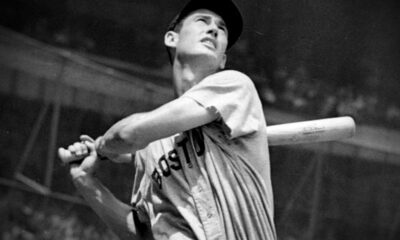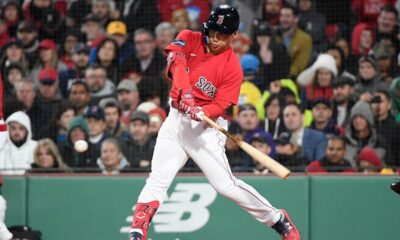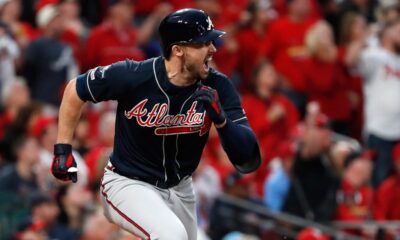
When I wrote my last article titled Bold Predictions for Each Grapefruit League Team, I was working with the pretext that Major League Baseball would be playing in Arizona and Florida for the 2020 season. However, the idea now at hand for the 2020 season is to have the teams play in their normal divisions but play against the other league in their respective region. For example, the AL East would play against their division rivals, and also against the NL East in interleague matchups; this idea would be the same for the Central divisions as well as the West divisions. MLB is deciding to go with this three region idea over the Arizona/Florida plan because that way players can still be close to their families and not be completely restricted to one hotel and baseball field. This means teams will not be separated into the new Grapefruit League (Florida) and Cactus League (Arizona) divisions. Nonetheless, bold predictions are needed for the “Cactus League” teams, as the “Grapefruit League” teams were covered in the last article.
MLB is likely to have around a 80 game season, so the predictions will be proportional to the number of games played. In a full 162 game season, if a player was predicted to hit 40 HRs, in an 80 game season, the prediction changes to 20 HRs. Now that the methodology behind these predictions has been established, here are the bold predictions for the “Cactus League” teams.
Arizona Diamondbacks: Starting pitchers average over 6.0 IP
The D-Backs as a whole are an underrated team and won 85 games last season. Then they added Madison Bumgarner, Starling Marte, and Kole Calhoun in the offseason. One way the Diamondbacks can optimize their performance on the field is to let their talented starting rotation pitch deeper into games. The whole rotation averaging 6.0 IP over the season sounds like a lot, but it is certainly possible. The projected five man rotation consists of Madison Bumgarner (6.11 IP/G), Robbie Ray (5.28 IP/G), Mike Leake (6.16 IP/G), Luke Weaver (5.36 IP/G), and Zac Gallen (5.91 IP/G between the Majors and Triple-A). All together, the Diamondbacks projected rotation averaged 5.82 IP/G last season. Bumgarner should be able to top the 200 IP plateau as he has done so frequently throughout his career, and Mike Leake has averaged at least 176.2 IP and 30 starts per year since 2011. Meanwhile, Gallen had an excellent rookie season, and should be just as good if not better in Year 2. Lastly, Weaver and Ray have both averaged higher IP/G in the past, so it is possible they can go deeper into games in 2020. If the D-Backs can average 6.0 IP/G, they might just make the playoffs for the first time in three years.
Chicago Cubs: The bullpen becomes the reason why the Cubs won’t make the playoffs
On paper, the Cubs look like they have a great team. Offensively, Bryant, Rizzo, Baez, Contreras, and Schwarber are all potential All-Stars. In the rotation, Darvish somewhat regained his form for the first time since 2017 as he drastically lowered his walk rate (4.72 BB/9 in 2018 to 2.82 BB/9 in 2019) and improved his ground ball % (37.6 GB% in 2018 to 45.5 GB% in 2019). Hendricks has quietly had at least a 2.5 fWAR each year since 2015. Also, although Lester and Quintana are past their prime, they are still reliable innings eaters. Then there’s the bullpen: Craig Kimbrel is the de facto closer for the Cubs, and there is still time for him to bounce back to his 2010-2018 form where he amassed 333 saves and an 18.1 fWAR (2.0 fWAR per year is elite for a reliever). Besides Kimbrel, the Cubs acquired a lot of unknown, up-and-coming relievers or reclamation projects such as Jeremy Jeffress, Colin Rea, and Ryan Tepera. Any good playoff team has to have a great bullpen (or at least in the Nationals case, one of the best starting pitching rotations in baseball). The Cubs are playing in a competitive NL Central with the Reds, Brewers, and Cardinals all being potential playoff teams. That being said, the Cubs will miss the playoffs for the second season in a row because of their bullpen.
Chicago White Sox: Yoan Moncada, Luis Robert, and Tim Anderson steal a combined 50 bases
If the White Sox can utilize both their speed and power, they have a legitimate chance to make the playoffs for the first time since 2008. Although it might be strange to see a 2020 team steal a lot when they have so much power (since they now have five players on the roster who hit 25+ HRs last year), this is a shortened season. In other words, the White Sox should optimize their offensive potential by stealing more bases. The White Sox have put together a competitive team for the first time since, well, the last time they made the playoffs. It is also not out of the question for Moncada (10 SB in 132 games), Robert (36 SB in 122 games), and Anderson (17 SB in 123 games) to steal 50 bags in a 80-game season. Overall, the trio averaged 41 SB per 80 games in 2019. Nonetheless, Anderson stole 49 bases in Double-A, while Moncada stole 49 bases in Rookie ball back in 2015. Still, Robert should be a safe bet to steal at least 20 bases in a shortened season. Anderson and Moncada have the speed to steal bases at a higher rate in 2020, so the only question remains: will the White Sox let this trio run rampant?
Cincinnati Reds: Sonny Gray, Luis Castillo, and Trevor Bauer all finish top-10 in the NL Cy Young award
Many baseball analysts feel optimistic about the Reds top three starters. Gray finished 7th in the NL Cy Young race last season, and Bauer finished sixth in the AL Cy Young race in 2018. At the same time, Castillo emerged as one of the most promising young starters last season. He had a 4.1 fWAR season last year, and was also one of the best starters during the first half of 2019 (106.0 IP, 2.29 ERA, 3.68 FIP, .169/.286/.276, .256 wOBA). The biggest question marks for these three pitchers are if Gray can continue to reestablish himself as one of baseball’s best starters, if Bauer can bounce back from an up-and-down 2019 season, and if Castillo can lower his high walk rate (3.73 BB/9 in 2019). It is possible for all three pitchers to be in the top-10 voting for the NL Cy Young award, but this is definitely one of the more bold predictions on this list.
Cleveland Indians: Francisco Lindor, Jose Ramírez, and Oscar Mercado all have 15-15 seasons
The Indians’ playoff hopes rest upon the Indians two best players: Lindor and Ramírez. Despite missing most of April, Lindor had 32 HRs and 22 SB in 143 games. As for Ramírez, he had a down year after placing third in AL MVP in 2017 and 2018. Nonetheless, he still had 23 HRs and 24 SBs in 129 games last season. At the same time, Mercado stepped up when Lindor was injured and Ramírez was struggling. In 115 MLB games and 30 MiLB games, Mercado had 19 HRs and 29 SB. As a whole, the trio were all very close to a 15-15 season in 80 games. Lindor averaged 18 HR and 12 SB, Ramírez averaged 14 HR and 15 SB, and Mercado averaged 10 HR and 16 SB in an 80 game span. The biggest x factors are that Lindor has to be more aggressive in 2020 (which he has been before), and Mercado has to continue to increase his burgeoning power.
Colorado Rockies: German Márquez finishes top-10 in the NL Cy Young award
Similar to many other Colorado pitchers, Márquez has been subjected to the Coors field effect. Coors Field, the Rockies stadium, is the most hitter-friendly ballpark. According to Sports Illustrated, the baseball is estimated to travel 20% further, and breaking pitchers are estimated to break 20% less. There’s no getting around Márquez’s disastrous pitching stats when he pitches at home (6.26 ERA, .317/.354/.495, .328 wOBA). However, on the road, Márquez is excellent (3.67 ERA, .212/.254/.397, .294 wOBA). Márquez might not pitch in Coors Field in 2020 because of COVID-19, or at least not as frequently. As a result, he might have better numbers in 2020. If he can also return to his 2018 form (2.95 ERA, .203/.260/.349, .265 wOBA), then he could receive NL Cy Young award votes this season.
Kansas City Royals: Adalberto Mondesi and White Merrifield steal a combined 60 bases
The Royals are not making the playoffs anytime soon, but that does not mean they shouldn’t let their players run wild on the base paths. (Showing off their speed would raise their trade value.) Whether or not the Royals do trade Mondesi and/or Merrifield, many teams would be interested in the two speedsters, especially since more teams will be vying for the playoffs in a shortened season. Additionally, the duo can steal 60 bases. Mondesi stole 43 bases in 102 games (about 34 stolen bases in 80 games), whereas Merrifield stole 20 bases in 162 games (about 10 stolen bases in 80 games). However, Merrifield stole 45 baes in 158 games in 2018 (or 23 bases per 80 games). Thus, if the Royals allow these two to utilize their speed, they can certainly steal 60 bases in a shortened season.
Los Angeles Angels: Andrelton Simmons leads the team in stolen bases
The Angels added arguably the best player in the offseason when they signed Anthony Rendon to a seven year, $245 million deal. Rendon finished third in the NL MVP last season for the Nationals, and had a career high 34 HRs and 126 RBIs. Since Mike Trout will be hitting in front of him, Rendon will have a lot more RBI opportunities. According to Baseball Reference, Trout is the tenth most successful base stealer of all time (84.746%), but with Rendon hitting behind him, the Angels might not want Trout to run into outs. Trout has stolen fewer bases over the years because of his immense power. Although he “only” stole 11 bases in 134 games in 2019, he hit 45 HRs. Also, a variety of injuries have limited the number of games he played to 140 games or less in the past three seasons. Knowing this, the Angels might want to ensure Trout’s health by having him run less. Furthermore, since Shohei Ohtani can return to the mound this season for the Angels, and is desperately needed at the top of the rotation, Ohtani might steal less bases. That being said, the next best runner is Andrelton Simmons, and he stole 10 bases in 103 games last season. Simmons also bats lower in the order for the Angels, away from power hitters such as Shohei Ohtani, Mike Trout, Anthony Rendon, and Justin Upton. In order to provide some more offense to the top-heavy Angels lineup, Simmons should be a threat to steal more often.
Los Angeles Dodgers: All returning players except for Austin Barnes receive 225 PA
The Dodgers have perhaps the best depth in all of baseball, especially when it comes to their offense. Players such as Enrique Hernández, Chris Taylor, and Matt Beaty all would be starters on many other baseball teams. However, they are blocked by Max Muncy, Corey Seager, A.J. Pollock, Joc Pederson, Cody Bellinger, and Mookie Betts, so they do not start as often. Over the course of a full season, starters tend to have around 600+ PA, so in an 80 game season, they might have around 300 PA. Over an 80-game span, backup players such as Hernández, Taylor, and Beaty would have averaged 283 PA, 267 PA, and 217 PA respectively. Also, Pollock and Pederson, who are likely to platoon in the outfield should also receive around that many PA, as they both can contribute a lot to the Dodgers. Although 225 PA seems to be lowballing the prediction, the Dodgers added Betts, which complicates the OF situation. Additionally, Lux will receive more playing time after impressing last season, which complicates the infield situation, leading to the 225 PA prediction.
Milwaukee Brewers: Keston Hiura strikes out at least 100 times
Hiura also has firmly established himself as the Brewers second baseman of the future and is one of the most exciting young players in all of baseball. However, he had a really high K% (30.7%) last season. Additionally, Hiura had an absurd 34.0 K% in the last month of the 2019 season. Over the course of a 80 game span in the Majors, Hiura was on pace to strike out 92 times. If Hiura were to strike out 100 times in an 80-game season he would have a 33.3 K%. Since pitchers will adjust to Hiura in his sophomore campaign, striking out 100 times appears to be inevitable.
Oakland Athletics: Jesus Luzardo wins AL Rookie of the Year
Although Mike Fiers and Sean Manaea are just fine at the top of the rotation, Luzardo is the real x factor in the rotation. He is one of the best young prospects in all of baseball. Additionally, he has always had an above average K/9 (never lower than 9.84 at any level), HR/9 (never higher than 1.13 at any level), and has improved his command since the 2018 season (2.32 BB/9 or less in all levels in 2019). The A’s also might allow him to pitch deep into games, especially because Luzardo has future ace potential.
San Francisco Giants: Nobody hits 15 HRs
Only three players on the Giants hit 15 HRs last season: Kevin Pillar (who is now on the Red Sox), Evan Longoria, Brandon Belt, and Mike Yastrzemski. Longoria had 20 HRs in 129 games. His power has plummeted over the past three seasons, so he will not be reaching even the 15-HR mark in a shortened season. Belt, on the other hand, had 17 HRs in 156 games, so there is little reason to believe he can reach 15 HRs in just 80 games. Although Yastrzemski reached the 20-HR mark in 107 MLB games in 2019, and hit an additional 12 HRs in 40 Minor League games, he also played a lot better than expected last season. He had a .360 ISO in Triple-A and .245 ISO in the Majors, and he hardly had an ISO over .200 throughout his minor league career. Therefore, with Yastrzemski’s expected regression and the lack of power on this Giants team, no Giant should hit 15 HRs this season.
San Diego Padres: Fernando Tatis Jr. will hit a maximum of 20 HRs and lead the team in strikeouts
Fernando Tatis Jr. shook the baseball world with his high energy and aggressive style of play in 2019. Nevertheless, Tatis Jr. certainly fits the build of someone who strikes out a lot but also hits a lot of home runs. Last season Tatis Jr. hit 22 HRs and a 29.6 K% in 84 games. His K% ranked fourth on the team behind Will Myers (who will lose playing time thanks to the addition of Tommy Pham and Trent Grisham), Hunter Renfroe (who was traded to the Rays), and Austin Hedges (who is expected to be the backup catcher behind Francisco Mejia). Tatis Jr. will be an everyday player and should regress from his phenomenal 2019 season. If Tatis Jr. did not succumb to a stress reaction injury in his lower back, he would have been on pace to hit 42 HRs. However, pitchers will adjust to Tatis Jr. in 2020, so he should strike out just as much if not more than last year and will lead his team in strikeouts. Also, because of a ridiculously high 31.9 HR/FB%, and a .272 ISO, which is well above any year he had in the Minors, a maximum of 20 HRs appears likely.
Seattle Mariners: Jarred Kelenic is called up by the half-way mark
Although the Mariners are not close to being a playoff team anytime soon, they do have a young core of impressive outfielders; these outfielders include Jake Farley, Kyle Lewis, and Jarred Kelenic. Over a full season, Farley and Lewis both have 20-HR potential pop; moreover, Kelenic has a 30-HR ceiling and can steal 20+ bases. Unlike Farley and Lewis, Kelenic has not played in the Majors, so the Mariners will probably start him in either Double-A (where he finished last season) or Triple-A. Kelenic has more potential than either Farley and Lewis, so if he continues to play well in the minors, he should be called up by the halfway point, whereupon he can prove he is the better outfielder and take a prominent place on the team. The Mariners have nothing to lose as they are poised for another last place finish in the AL West, but if Kelenic can see a respectable amount of time in the Majors this year, he could be well on his way to a bright career.
Texas Rangers: Corey Kluber wins Comeback Player of the Year and places top-10 in the AL Cy Young award
Corey Kluber was one of the best starters in the 2010s. From 2014-2018, he had at least 200.0 IP, sub-3.50 ERA, won two Cy Youngs, and made three All-Star teams. In 2019, tragedy struck when Kluber was sidelined for the entire year because of a right ulna fracture. Although Kluber is now 34 years old, there is reason to believe that he came back to his 2014-2018 form. After all, Kluber is a late bloomer and did not make his MLB debut until he was 25. Additionally, Kluber pitched pretty well in Spring Training before it was cut short; in 7.0 IP, Kluber had a 3.86 ERA, .174 BAA, and 1.14 WHIP. Since Kluber pitched well when he was healthy at the start of the year, he should be able pitch well once the season begins, thus earning him Comeback of the Year honors, and a top-10 finish in the AL Cy Young award.
Key:
HR: Home Run
IP/G: Innings Pitched per game
BB/9: Average number of walks in a nine-inning game. MLB average: 2.92 BB/9
GB%: The percentage of balls in play that ends up as a ground ball. MLB average: ~44.0 GB %
fWAR: Wins Above Replacement for Fangraphs. For example, if a player has a 0.1 fWAR they are worth 0.1 wins more than a replacement-level player (0.0 fWAR). The average starting player is worth 2.0 fWAR.
SB: Stolen Base
MiLB: Minor League Baseball
Cy Young award: Award given to best pitcher in each league
ERA: Earned Run Average. MLB average: 4.49 ERA
FIP: Fielding Independent of Pitching. This stat is essentially a version of ERA that is more focused on what the pitcher can control (Walks, Home Runs, Strikeouts, Hit Batsmen). MLB average: ~4.50 FIP
Triple Slash Line: BA (Hits/At Bats)/OBP (Hits+Walks+Hit By Pitches/Plate Appearances)/SLG ((Singles*1+Doubles*2+Triples*3+Home Runs*4)/At Bats). MLB average: .252/.323/.435
wOBA: Weighted On Base Percentage. An offensive stat that is a truer version of OBP. MLB average: .320 wOBA
20-20: A player that has at least 20 HRs and 20 SBs
PA: Plate Appearance
K%: Strikeout percentage. MLB average: ~20.0 %
K/9: Average number of strikeouts in a nine-inning game. MLB average: 7.92 K/9
HR/9: Average number of homers allowed in a nine-inning game. MLB average: 1.26 HR/9
ISO: Isolated Power. A way to show a player’s power based on all extra-base hits. It is essentially a truer slugging percentage. (Doubles+Triples*2+Home Runs*3)/At Bats. MLB average: .183 ISO.
BAA: Batting average against–how well opposing hitters do against a pitcher. MLB average: .252
Sources:
https://www.baseball-reference.com/
https://www.mlb.com/news/2019-cy-young-award-vote-totals
https://www.si.com/mlb/2017/07/13/colorado-rockies-coors-field
Related

Featured Articles
-
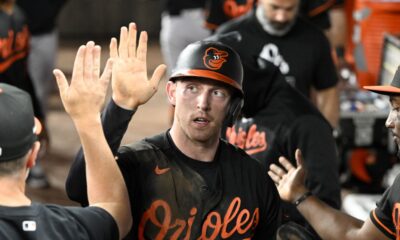

Features
/ 20 hours agoAL All-Star Team for April
Only one April All-Star will be player of the month, but all deserve recognition...
-
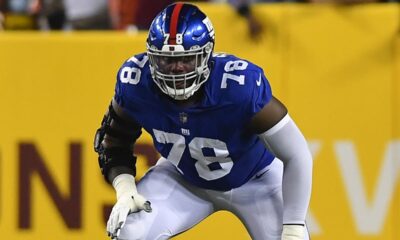

Big Blue Report
/ 2 days agoAndrew Thomas Primed for 2024 NFL Season Amidst Offensive Line Overhaul
As the NFL offseason unfolds, the New York Giants are busy reshaping their roster,...
By Randy Zellea -
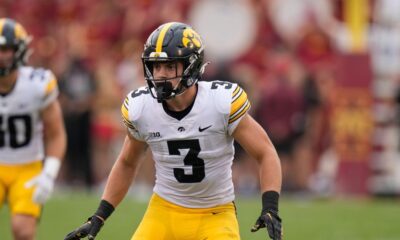

College Football
/ 3 days agoNFL 2024 Rookie Scouting Report: Cooper DeJean, CB, Iowa – Philadelphia Eagles
Drafted by: Philadelphia Eagles Height: 6’0 ½” Weight: 203 Arm Length: 31 ⅛ ...
-
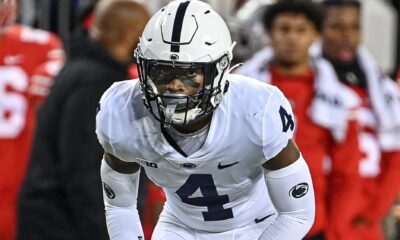

College Football
/ 3 days agoNFL 2024 Rookie Scouting Report: Kalen King, CB, Penn State – Green Bay Packers
Drafted By: Green Bay Packers Height: 5’ 11” Weight: 191 Arm Length: 30...
